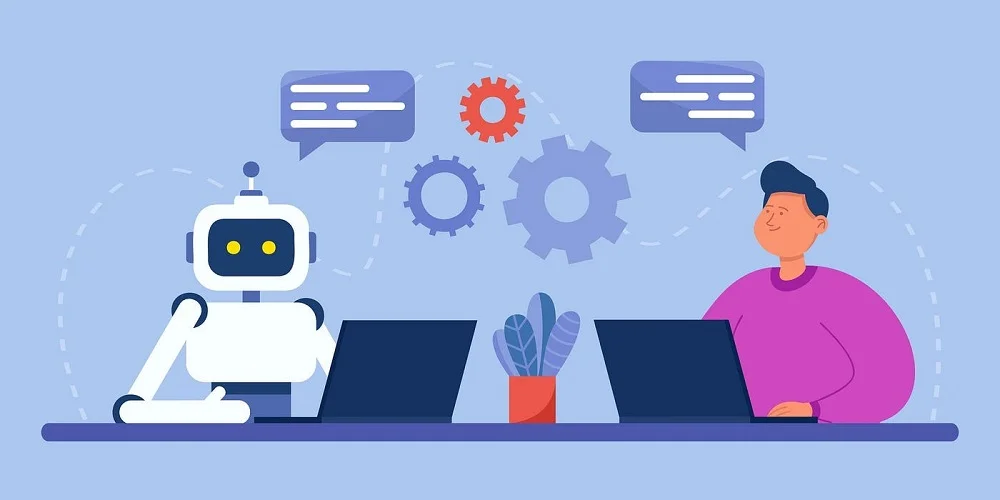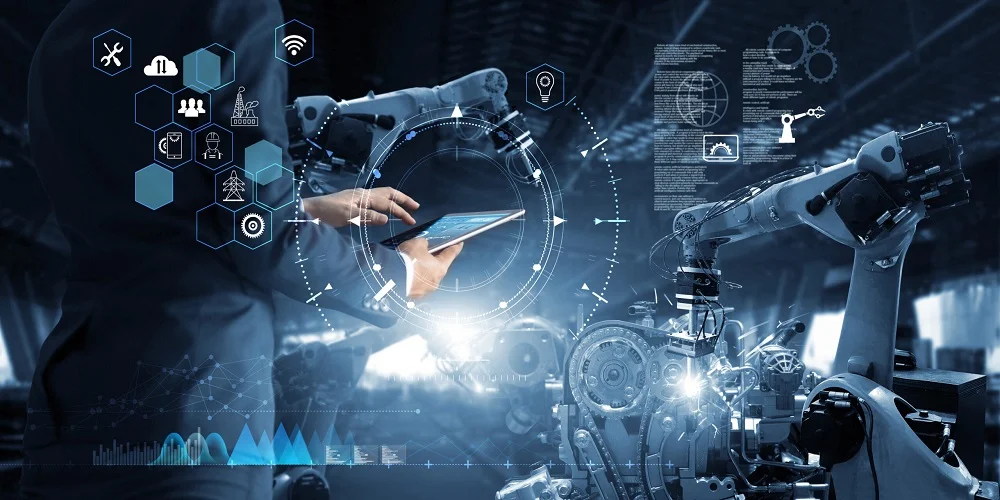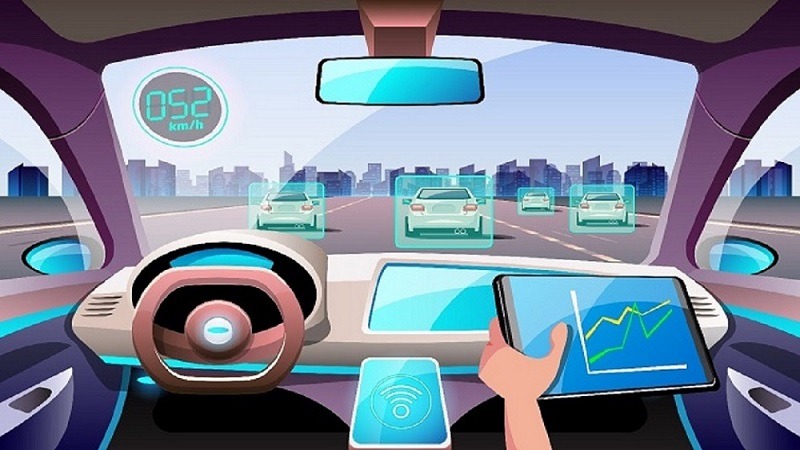AI Development with Open-Source Tools
AI is applied in several areas, notably in the area of business and education, and is having a significant influence on the future of an educational system. However, it is essential to keep in mind that open-source tools driven by artificial intelligence, like ChatGPT and AutoGPT, are only in the form of tools. However, they are possible solution-driven open-source tools that may increase our approach and understanding to solve any issue. They are not silver bullets that could resolve all problems on their own.
Learning new technology is not something where it can be accomplished quickly. Nonetheless, acquiring a fundamental understanding of artificial intelligence will assist you in exploring the principles that lie underneath them and optimizing the endless advantages that they can offer to your company.
Understanding the need for Democratizing Adaptive Artificial Intelligence
Artificial Intelligence (AI) has evolved as a formidable instrument with immense potential on account of the quickly expanding technological environment that we are now experiencing. The use of Adaptive AI Development Services has the potential to transform a wide range of sectors, from improving the quality of consumer encounters to perfecting company procedures. The construction of artificial intelligence models, on the other hand, has historically been a difficult and resource-intensive process. It has only been available to a select few individuals who have specialized skills and resources.
The era of exclusively coding AI solutions is a thing of the past. The emergence of the no-code AI movement is introducing a new phase of digital craftsmanship, eliminating the loss of ideas during the translation from concept to code. This marks a new beginning where you can effectively manage AI to serve your needs, revolutionize your field, and potentially have a global impact.
Impact of Adaptive AI on Various Industries

The rapid advancements that have been made in the area of artificial intelligence have significant repercussions not just for the economy but also for society as a whole. These breakthroughs can directly impact the production as well as the features of a broad variety of goods and services. This might have significant repercussions for the phases of efficiency, employment, and competition in the market. AI can alter the invention procedure itself, which may have implications that are just as deep. And that might, over time, come to dominate the direct impact. This is despite the fact such effects have the potential to be of great significance.
1) Manufacturing Industry
Manufacturing will function in a way that has never been seen before, lowering costs and refining customer service, all thanks to an AI-compatible smart plant. Industries can prevent downtimes by projecting delays, exercising control over inventories by monitoring stockpiles, anticipating the rapidity of distribution, and supplying items of the greatest possible quality. It is possible to apply computational vision to monitor the manufacturing process and identify errors, like the minuscule fractures that were seen in the production facilities. Companies may get alerts from AI on manufacturing line issues that might potentially lead to quality issues.
2) Retail and Commerce
Additionally, the retail and e-commerce industries have benefited from the development of adaptable artificial intelligence. Adaptive artificial intelligence systems can assess client behavior and preferences, which enables them to tailor product suggestions, optimize pricing tactics, and improve the entire shopping experience. Artificial intelligence methods that are adaptive can understand new runtime data and adapt to changing contexts by modifying their code.
A framework for decision-making is included in them. This framework allows for choices to be made more quickly while maintaining flexibility in terms of learning from fresh situations. The longer time passes, the more precise and proficient this framework gets when it comes to making judgments and/or finding explanations for problems. The expansion of sales is driven by this degree of personalization, which also helps to develop client loyalty.
3) Transportation
This area has seen substantial progress achieved by adaptive artificial intelligence. Moreover, it is encouraging that transportation authorities are working to figure out how to leverage such tech to generate a quick improvement in easing cramming, making travel time quite dependable for their clients, and enlightening the finances and effectiveness of its essential assets. Artificial intelligence (AI) approaches are now being used all over the globe to handle transportation issues, namely in the areas of traffic management, traffic safety, public transit, and urban mobility. The review comes to a close by discussing the difficulties and constraints that are associated with the deployment of AI in the transportation sector.
It is possible to harness AI to drive autonomous vehicles adjusting to change road conditions, traffic patterns, and user preferences. This makes for rides that are both safer and more efficient. There is a possibility that this technology may change transportation networks, therefore lowering the number of accidents and easing congestion while simultaneously increasing total mobility.
4) Education
To expand education and level the playing field for everyone, regardless of their circumstances, adaptive artificial intelligence is the best technique to do it. The majority of individuals are unable to afford one-on-one tutoring. Nevertheless, artificial intelligence makes it possible to provide a customized experience that is tailored to each student.
This may assist us in the creation of instructional and testing material in a short amount of time, as well as in the curation and recommendation of resources for learners who are at a particularly challenging level given the capacity of the learner. Adaptive test experiences may be created by artificial intelligence in the context of assessment. These experiences can zero down on a test taker’s ability in a more efficient manner than was previously feasible. This results in a testing experience that is both speedier and more streamlined.
Adoption of Adaptive AI with Open-Source Tools
A revolutionary and inclusive future in the development of adaptive artificial intelligence has been made possible as a result of the use of open-source tools. These technologies have made it possible for people and organizations to participate, cooperate, and develop in the area of AI by removing obstacles and providing chances for them to do so. To successfully integrate adaptive AI systems, it is essential to bring together users from the business, information technology, and support departments.

By adopting open-source software development technologies, developers and researchers can have access to a broad variety of resources, frameworks, and libraries. This will make it easier to create adaptable artificial intelligence systems. As a result of the collaborative nature of open-source projects, the community’s cumulative knowledge and skills may be used. This ultimately results in more rapid improvements and solutions that are more robust.
Adaptive AI go from the Cloud to the Edge
Artificial Intelligence is now being moved from the cloud to the edge as a result of concerns around data privacy, transmission capacity, and processing latency. However, the same AI technology that has brought about significant advancements in cloud computing, particularly due to the availability of Graphics Processing Units (GPUs) for training and operating huge neural networks, is not appropriate for edge AI. Artificial Intelligence devices at the edge of the network operate with limited resources, including memory, electricity, and computational horsepower.
The process of training sophisticated Deep Neural Networks (DNN) is already a complicated one, and training for edge targets may be an exponentially more challenging endeavor. When it comes to training Artificial Intelligence for the edge, traditional methods are restrictive. This is since they are predicated on the idea that the processing for the inference is statically established throughout the training process.
The post-training quantization and pruning techniques that are included in these static methods do not take into account the possibility that DNN may need different operations during runtime. When compared to the static methodologies described above, adaptive Artificial Intelligence represents a significant paradigm change in the manner in which AI is taught as well as how current and future computing requirements are calculated.
Bottom Line
Make use of the strength of our resilient Artificial Intelligence apps, which seamlessly combine adaptive AI capabilities. The open-source tools make it possible for artificial intelligence to learn on its own. This enables it to adapt to and flourish in surroundings that are always changing, resulting in exceptional outcomes. Through the use of adaptive AI development, you will uncover a vast array of opportunities. Embrace the influence of open-source tools and be a part of the adaptive AI revolution!



